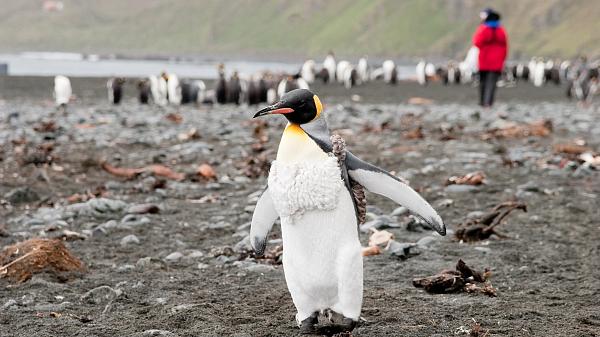Time Zone Changes in Antarctica
Three Australian stations in Antarctica made recent changes to their time zones for the summer season in the southern hemisphere due to operational changes.

Time Zone Changes in Antarctica
©iStockphoto.com/Phillip Danze
The Casey station is now 11 hours ahead of Coordinated Universal Time, or UCT+11, while the Davis and Mawson station are now on UTC+5. The changes took effect at 2am (02:00) on Sunday, October 18, 2009.
The Australian Antarctic Division maintains four permanent research stations. Macquarie Island station, which is the fourth station, has not changed its time zone. It is on UTC+10 when it does not observe daylight saving time (DST) and UTC+11 when it is on DST.
Three Stations Have New Time Zones
Mawson station, which is on an outcrop of rock on the coast in Mac Robertson Land at the edge of the Antarctic plateau, moved its time zone one hour back from UTC+6 to UTC+5. It now shares the same time zone as the most southerly Australian Antarctic station, Davis station, which moved two hours back from UTC+7 to UTC+5.
Casey station, which is located in the Windmill Islands just outside the Antarctic Circle, moved three hours forward from its previous time zone, UTC+8, to Australian Eastern Daylight Time ( AEDT), which is UTC+11.
Why is there a Change?
The time zone changes for the three stations are a result of operational changes that took effect in the Australian Antarctic Division. Australian Antarctic Division's Deputy Director, Virginia Mudie, said the changes were implemented to help manage fatigue issues on station. "Over summer the flights from Hobart to Casey station were resulting in employees working long hours, from very early in the morning to meet incoming planes," Ms Mudie said.
Ms Mudie said that the new time zones would mean station working hours would better correspond with aircraft arrival and departure times. At Davis station, strong winds in the morning were delaying flying operations until after 10am (00:00) local time. "We decided to adjust the time at Davis to ensure the start of the working day coincided with the best weather patterns for flying," Ms Mudie said. It is anticipated that the time change at Mawson station would result in similar benefits in reducing working hours for employees.
The stations have very little darkness each day during their summer period, so altering the time zone would not have any major impact. There is no end date specified for the Casey, Davis and Mawson stations at the moment. The changes for all three stations will be subject to review at the end of the summer period in the southern hemisphere.
No Change for Macquarie Island Station
No time zone change occurred at the fourth station, Macquarie Island station, which is on Australian Eastern Standard Time ( AEST), or UTC+10. However, there are discussions to move the station’s time to UTC+11 next winter (in 2010) to maximize daylight for helicopter operations for a program. Macquarie Island station observes the same time as Hobart, in Tasmania, which is on AEDT, or UTC+11, when it observes DST and AEST, or UTC+10, during the non-daylight saving period.
Brief Background
Australia's Antarctic Stations all operate on different times. Except during the summer season in the southern hemisphere (October to March), the stations are in different time zones, reflecting the longitudinal distance that separates them. Time differences between Australia and the stations vary from state to state and also with daylight saving regimes during summer. Timeanddate.com will update its site with more information about the time zone changes that apply to the Australian Antarctic Division as more details become available.
Note: timeanddate.com wishes to thank the Australian Antarctic Division and the Australian Bureau of Meteorology’s Antarctic Meteorological Section for this update. Also, any references to summer or winter in this article relate to the seasons in the southern hemisphere.